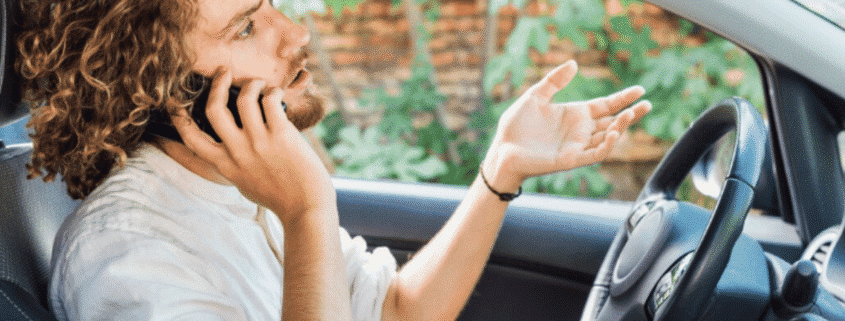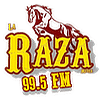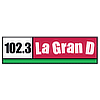What Do You Need to Know About Distracted Driving Accidents?
A quick glance at a text, a spilled drink, a child asking a question from the back seat. It takes only a moment for focus to break. On roads, that moment can change a life. Distracted driving is any action that pulls your eyes, hands, or mind away from safe driving. It is not only about phones. It can be food, music, a map, or stress after a long day.
We have written this article to explain common causes, how distraction harms everyone on the road, helpful tech that can reduce risk, and the authentic reasons our focus slips. You will also learn when it makes sense to speak with a local car accident lawyer who understands the rules and insurance steps.
Key Things You Should Know
- Phones are not the only issue on roads
- Short glances add up to long blind travel
- Utah winter and canyons raise driving demands
- Use maps by voice, not by hand
- Insurance calls can affect later claims
- Local help can guide your next steps
What Counts as Distracted Driving on Roads?
Distraction falls into three basic groups. Visual means your eyes leave the road. Manual means your hands leave the wheel. Cognitive means your mind drifts from the task. Many actions mix all three. That is why even brief moments can be risky on highways.
Here are some common examples:
Texting is the classic example, but it is just one. Eating a burrito, picking up a dropped water bottle, reaching to tap a playlist, or looking at ski traffic on the next lane can stack seconds where you are not truly driving.
At highway speed, a five second glance is like traveling a football field with your eyes closed. Add winter storms, sun glare along the Wasatch Front, or canyon gusts near the Point of the Mountain, and the chance of a mistake grows.
Families also juggle kids, pets, and sports gear. Before leaving, do a quick reset. Set the climate, seat, and mirrors. Mount your phone so it sits at eye level. Turn on a voice assistant. Preload a route. If a message must be read, pull into a safe lot.
Common Distractions That Lead to Crashes
Think about your last drive. There are various types of distractions. We are going to explain some essential types to help you get some ideas about them.
1 – Phones and screens
Reading or typing a message pulls your eyes and thoughts away. So does scrolling, video calls, or snapping a quick photo of a sunset in Big Cottonwood. Even at a stoplight, screen habits can carry into motion.
2 – Food and drink
Coffee lids pop. Sauces drip. Searching for a napkin creates blind travel. Hot drinks also add a burn risk that can trigger sudden swerves.
3 – Passengers, kids, and pets
We care about the people and animals we love. A crying toddler or an excited dog can pull focus. Secure car seats and carriers, and set ground rules for teen friends.
4 – Controls and personal care
Tuning the radio, fixing hair, or adjusting the GPS can wait. Set these before moving. Use quick voice commands instead of scrolling long menus.
5 – Roadside sights
Crash scenes, billboards, or a beautiful lake view can take your eyes off the lane ahead. Slow down if you must look. Better yet, keep the scan pattern moving.
Simple habits make a big difference. Stow loose items. Plan stops for snacks or phone checks. If the other driver was reaching for something and hit you, a car accident attorney in Utah can work to show how that lapse caused the crash.
How Distracted Driving Harms Everyone On The Road?
The harm from distraction shows up in several ways.
- First, reaction time slows. A driver who would normally brake early ends up braking late and hard. That raises the risk of rear end impacts and chain reactions.
- Second, lane control suffers. Small drifts over the center line or onto the shoulder can place a car in the path of a cyclist, a motorcycle, or a snowplow.
- Third, speed control changes without the driver noticing. People tend to speed up when they look away, then overcorrect when they look back.
Weather multiplies those risks. Wet spring roads in the valleys, summer glare on long desert stretches, and winter black ice in canyons turn small mistakes into major problems. Traction is reduced, so late moves fail. Visibility drops, so others cannot avoid you in time. Pedestrians near schools are also at risk when drivers split their attention at pickup and drop off.
Tools That Help You Drive With Focus
Tech can help when used the right way. The goal is fewer touches and fewer glances. Start with your phone. Turn on Do Not Disturb While Driving. Most phones allow auto replies that tell friends you will respond when you arrive. Set simple voice commands for calls and texts so you do not type. Mount the phone on the dash at eye level rather than in a cup holder where you must look down.
Many newer cars include driver attention alerts that sense lane drift, steering patterns, or missed braking. Lane keeping help and forward collision warning are useful if you treat them as backup, not as permission to look away.
- Use one favorite maps apps with voice
- Preload your route before you shift to Drive
- Turn off alerts while parking
- Enlist the help of a passenger as a navigator
- Build a habit: phone face down and locked
None of these tools replaces attention. They support it. If your screen still tempts you, move the phone out of reach. Keep snacks closed while moving. If needed, pull into a gas station to reset music, reply to a text, or help a child. Safe choices add minutes, not hours, and may prevent a life-changing event.
Why Do Our Minds Wander Behind The Wheel?
Understanding the “why” helps you fix the “what.” Our brains like novelty. Every ding, buzz, or flash promises something new. Long, straight roads also invite daydreaming. Fatigue makes it worse. After a ski day at Snowbird or a long shift, the mind slips into autopilot. Stress adds another layer. A tough call with an insurer, a school deadline, or a money worry pulls your thoughts inward while your hands keep driving.
Social habits play a role. Some people feel pressure to reply fast to a text. Others use the drive to catch up on calls. Parents try to comfort kids. Teens may feel fear of missing out. These are normal human pulls, not moral failings. The fix is to build new defaults. Set messages to silence while the car moves. Tell your circle you do not answer on the road. Plan a music playlist before leaving. If you notice your thoughts drifting, name them out loud and refocus on mirrors, speed, and space ahead.
Hire the Best Car Accident Injury Lawyer in Utah
When a distracted driver causes harm, choosing counsel who knows local roads, local courts, and local insurers can steady the process. Chris Cockayne and his brilliant team at Cockayne Law help people who never asked to be in this situation. They keep it simple.
First, they listen. They want to understand your injuries, your car damage, and your goals. Then they explain the plan in clear terms, from medical billing to lost wages and repair steps. They keep you updated and return calls.
You may feel pressure after a crash. An adjuster wants a recorded statement. Bills arrive before the body heals. You don’t have to go through this alone. A steady hand can protect you from early mistakes and missed details. Ask questions. Get more information about fees. Seek out a Utah car accident attorney who works hard for a fair verdict and treats you with respect.
Final Thoughts
Focus is kindness on wheels. It protects you, your family, and the strangers who share your lane from Logan to St. George. Build simple habits that limit touches and glances. Check to see if a distracted driver can be held liable for your injuries. Organize all photos, notes, and receipts. Do not rush to sign forms you do not understand. A local guide can remove guesswork.
FAQs
How legal is texting in Utah?
Yes. Utah law bans writing, sending, or reading texts while driving. Additionally, you are less likely to use your phone while distracted from your task. Even when stopped at a light, screen habits can carry into motion.
How do I prove the other driver was distracted?
Proof can come from several places. Witness statements, dashcam clips, store camera video, and vehicle data help. Phone records might show activity near the time of impact. Photos of open food containers, fallen items, or a streaming screen can also support your claim. An experienced team knows how to preserve and request this proof before it disappears.
How does insurance work in Utah after a crash?
Utah uses a system where you typically turn first to your own injury benefits to cover initial medical care. When the injury is severe or the bill is large, you may be able to sue the at-fault driver. Property damage claims follow different steps.
What if a teen driver or a rideshare driver caused the crash?
Special issues can come up. With teen drivers, there may be questions about training, curfew, or phone use rules. With rideshare, the company’s insurance may apply based on whether the app was on and whether a ride was in progress. These details shape who pays and how claims are handled. Save screenshots and ride receipts if involved.
How should I proceed after a low-speed crash?
Get checked even if you feel okay. Soft tissue injuries and concussions can show up hours or days later. Follow the care plan. Keep all bills, visit dates, and notes about pain and limits at work or home. Share changes with your provider.









